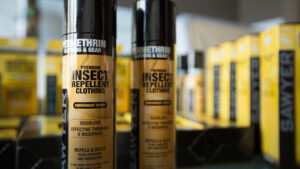Call for your appointment today 914-666-4665 | Mt. Kisco, New York

In the article “Interventions to prevent Lyme disease in humans: A systematic review,” Richardson writes, “In general the quality of evidence was low. There were typically only 1 to 3 studies and these had mixed results. [1]
Following are several personal protective measures promoted to prevent Lyme disease:
- Tick repellents and protective clothing: “Tick repellents and protective clothing may be associated with a lower incidence of Lyme disease (LD) (2 studies).”
- Tick checks: “Effects were mixed for the association between tick checks and incidence of LD (2 studies).”
 Showering: “Bathing within 2 hours of being outside may be associated with a lower incidence of LD (1 study).”
Showering: “Bathing within 2 hours of being outside may be associated with a lower incidence of LD (1 study).”- Treated clothing: “Permethrin-treated battle dress uniform (1 study) and Citriodiol insect repellent (1 study) may reduce the number of ticks crawling or bites.”
Following is a list of interventions intended to reduce tick bites:
- “Having a fence or stone wall, trimming overhanging branches, having a dry barrier, spraying the yard, and killing other pests may be associated with a lower incidence of LD (1 study).
- Mowing the lawn frequently, and having a vegetable garden, bird feeder, woods near the property, log pile and clearing leaves may be associated with a higher incidence of LD (1 study).
- Spraying properties reduces the frequency of ticks crawling or attached (1 study).
- Effects were mixed for spraying property on the incidence of LD (3 studies).”
[bctt tweet=”Only a handful of studies have looked at the effectiveness of tick bite prevention methods. So, are we really protecting ourselves? ” username=”DrDanielCameron”]
Richardson and colleagues’ findings reveal just how little we know about the effectiveness of the current strategies used to prevent tick bites.
As the authors state, “Tick repellents and protective clothing MAY be associated with a lower incidence of [Lyme disease].”
And, “Effects were MIXED for the association between tick checks and incidence of LD.”
Meanwhile, the incidence of Lyme disease grows. As we continue to promote these protection strategies, it’s important that their effectiveness in preventing tick bites continues to be investigated.
Related Articles:
Tick bite prevention methods are failing our children
How effective is permethrin-treated clothing in preventing tick bites?
Permethrin-treated clothing causes ‘hot foot’ effect in ticks
References:
- Richardson M, Khouja C, Sutcliffe K. Interventions to prevent Lyme disease in humans: A systematic review. Prev Med Rep. 2019;13:16-22.




I truly feel this article is too early. For most of the population, ticks are a “new” thing. Education efforts are really just starting. Do most people use bug spray, tuck in their pants, wear treated clothing and take a shower after being outside? No.
Do most people think it is something they should worry about? No.
To say that these measures may not be working is misleading. It should be focussed on whether or not people even think that ticks and Lyme are a risk to them.
Well stated.
In looking at the studies cited regarding vaccination (3.5), three of the authors including Wressnigg are employed by Baxter Bioscience, a research and development group for vaccine development. Isn’t that akin to putting a fox in the hen house?
i have started taking a garlic supplement, in order to repel ticks. Has anyone else tried this. I have had Lyme disease and do not wish to get it again.
Armed forces have used permethrin to prevent tick bites since 1991. The peak incidence of Lyme is age 5-15 and our children don’t put on DEET, won’t do tick checks, and walk anywhere they please. But they do wear clothing, which can be treated to disable/kill a tick within a minute. See how well it works – https://www.agemanagementboston.com/permethrin-kills-ticks-prevents-lyme-disease-summer-2018/
I got a tick bite in Highlands,NC. I had no caution. Very bad outcome.
So, yes, tick danger awareness is quite low.